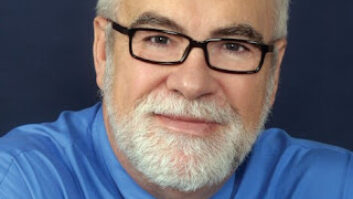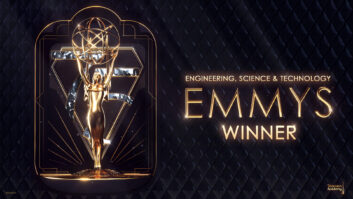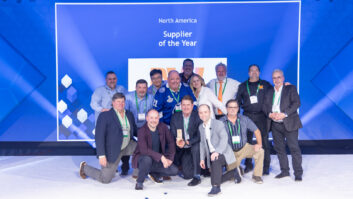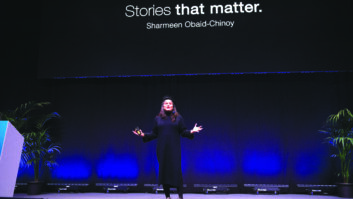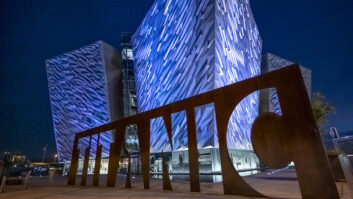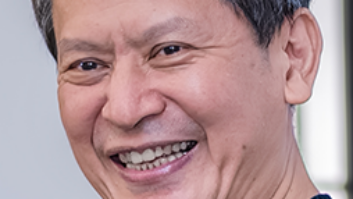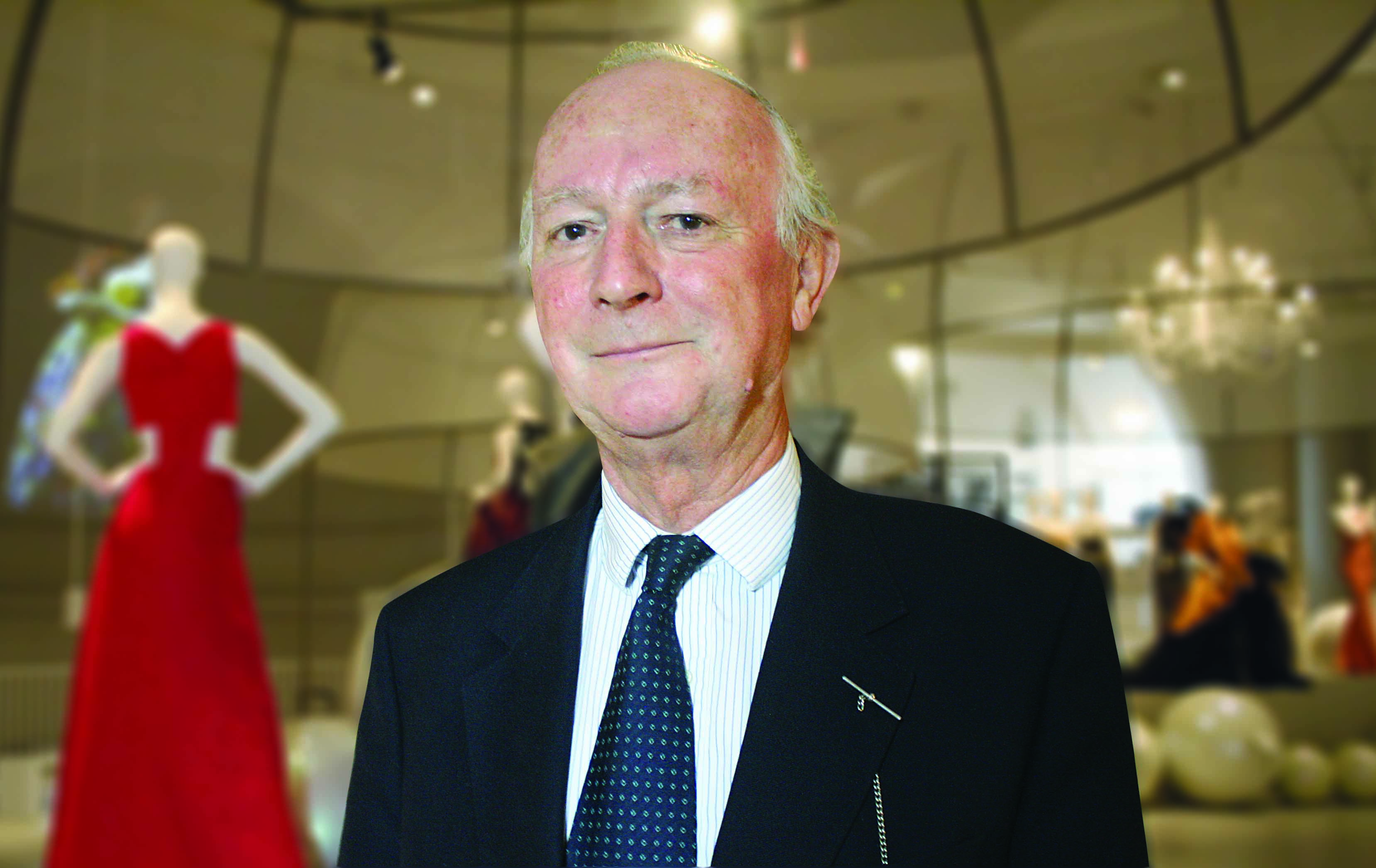
The 15 Years of Achievement award is presented to an individual who, through the lifetime of Installation, has built up a body of work that has left a lasting impression on the industry.
We’re delighted to announce that the recipient of the award is Robert Simpson, founder director of Electrosonic. One of the key figures in the genesis of AV industry, Bob Simpson’s entire working life has centred around the company he helped to found in 1964; Electrosonic works as an integrator, mainly in corporate and entertainment markets, with offices in the UK, US, Sweden, China and the UAE. He remains a director of, and an advisor to, the company: when we speak, he’s just back from a trip to the Middle East, helping a client get to the next stage of a difficult projection installation. He also does a lot of writing: he has written three books, Effective Audio Visual: A User’s Handbook (1987), a slim volume on Videowalls (1991) and Lighting Control: Technology and Applications (2003). To coincide with Electrosonic’s 50th anniversary he has written a history of the company, its technology and projects, entitled Electrosonic – 50 Years on the Audio-Visual Front Line. He has also given talks on technology trends at shows including ISE and InfoComm.
He recently spoke to Paddy Bakerabout some of his recent work, as well as key trends in the industry during the past 15 years.
How do you choose what to work on, on a day-to-day or week-to-week basis?
I try and get to see the major projects that we do. If I’m over in the States, for instance, I’ll try and get to see something that we’ve worked on and something that I may well have given advice on to begin with. A great pleasure last November was to go to Kennedy Space Center, which has been a client of ours for 20 years or more. They’d just opened a new exhibit hall about the Space Shuttle programme; it’s a very nice exhibition and I’m delighted we got involved with it. They’ve actually got the real Shuttle there – not a model or a projection of it. It was nice that we could help with the interpretation and the conventional AV exhibits there – and also it’s the fact that technology now enables us to do things like a 120ft wide picture of the Earth behind the Shuttle. I help out quite a lot with projects like that.
Personally I don’t get out the slide rule any more, but I do try and keep in touch with the client and with all the other people working on a project, and particularly our own people – and when possible, carry the torch for them.
While Electrosonic is celebrating 50 years, Installation is marking its 15th anniversary. Can you pick out what were the biggest technological changes in that timeframe?
The big change that had already happened then was the move to digital video sources. We had the first move to standard definition video sources, which got us going in the 1990s, then the big shift to high definition. As for the very big changes… people forget that, for example, slides were still being used right up to the end of the 20th century for major business presentations and so on because they were the only things that would give you the resolution that you needed. It’s only in the 21st century that electronic projection got good enough to use. Now we take it for granted, and of course it’s now much better than slides, but there was a crossover period when it most definitely wasn’t – and it really only became viable when sensibly priced and reliable projectors became available. It was the late 1990s when they got going, and really got motoring in the 21st century.
Similarly with source equipment: in 2000 we did one of our first high-definition installations in an exhibit environment, and we had the problem of compressing the high-definition video to MPEG-2 to run in our recently developed HD player. The actual file for a 10-minute piece of high definition was a stack of exabyte tapes that was a foot high, and it took more than 24 hours to do the MPEG encoding; whereas now a desktop computer will do it in real time. These are fantastic improvements.
Undoubtedly the flatpanel revolution is complete. It’s a tragedy for me that plasmas have gone, because they were beautiful, but of course LCD has triumphed. And the fact that you can get them so big and so cheap is amazing. Now the idea that you bung up a videowall with 24 LCDs, you take that for granted.
In the corporate market the revolution is much more that people are actually using AV, whereas 15 years ago often you had systems put in as a status symbol that didn’t do very much. That revolution has all happened because of the PC and particularly because of things like the iPad. The acceptance of AV as we know it in presentation and videoconferencing terms has come about because of the consumer acceptance of similarly sophisticated gadgets. It was never going to come until it was part of everybody’s life.
Looking at display technologies, are there particular technologies or application areas that you think will be the next big thing?
There is a lot of evolution going on here. High-resolution LED, which three years ago was a bit clunky and horrendously expensive, is now a viable display system for all sorts of applications. It will replace projection in some applications because it doesn’t need any projection space and it’s pretty well immune to ambient light. Some of the 2mm pitch stuff is getting close to a price where it will become a commodity. If somebody wants a lobby with a 25ft-wide picture which works under all conditions and adapts its brightness to the ambient and is viewed from a minimum of six feet – that sort of technology is going to be totally viable for that application where previously you might have put a videowall or used projection.
And then everything is going 4K. Some of that is totally unnecessary but because it’s available, people will use it. But when you want huge images that people want to view closely, it will be important.
I remain excited by what’s going on and follow it with great interest. Where we are ourselves at the heavy end of the projection market there are some very exciting things happening. Obviously the key things are things like hybrid illumination in projectors. There’s a degree of hype there: there are some offerings on the market where you’d be better off using a lamp. On the other hand, there are going to be completely new applications opened up by the fact that you can get more reliable and stable light source which will last longer and have much better running economics.
But technology is something that will continue to be fun, and there will continue to be lots of new ones. I’ve tracked this for a long time – it’s amazing in the few years how many embryonic technologies that were sure to make it, never did, particularly in the flatpanel market: the number of casualties there has been incredible.
How good do you think this industry is in communicating its knowledge within itself and to the next generation – is it getting better or any worse?
I think probably in magnitude terms it’s getting better, but in percentage terms it’s not – because if you like the market is getting bigger. The problem is and always has been that acquiring knowledge is a voluntary activity: people who want to learn, make the effort to learn. There are also a number of things that you cannot learn unless you’re put in the position of getting the experience to do it. You can’t learn some things from textbooks or PowerPoint presentations – you have to get down and dirty with whatever it is. There are plenty of opportunities to learn and I believe that things like the InfoComm CTS programme are very valuable in actually forcing some level of common knowledge, if you like. I think InfoComm is the only organisation that has the critical mass to make that actually work.
Nobody is ever going to say enough is being done, but equally you can’t force customers to come to you or go to a training session, there has to be the need. And it’s always when the need happens that people suddenly want to know.
I wonder if in another life you might have become a technology journalist, given your interests in technology and in writing.
In principle you’re probably right. I’ve always enjoyed trying to keep some kind of record of what we’ve done. We’ve produced [‘occasional publication’] Electrosonic World since 1980 and I couldn’t have written the book recently without it, because the back issues have been the most valuable record in terms of showing what we’ve done. I take great pleasure in doing that.
TICKETS
To book tickets for the first ever InstallAwards visit www.installawards.com/buy-tickets or contact Sara Mather on +44 (0)20 7354 6001.
www.electrosonic.com
www.installawards.com
